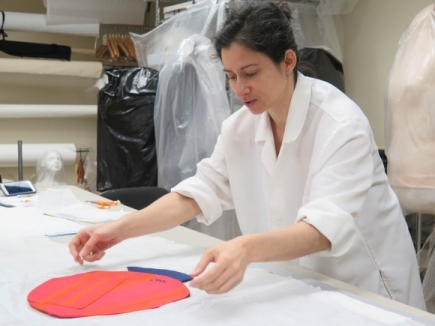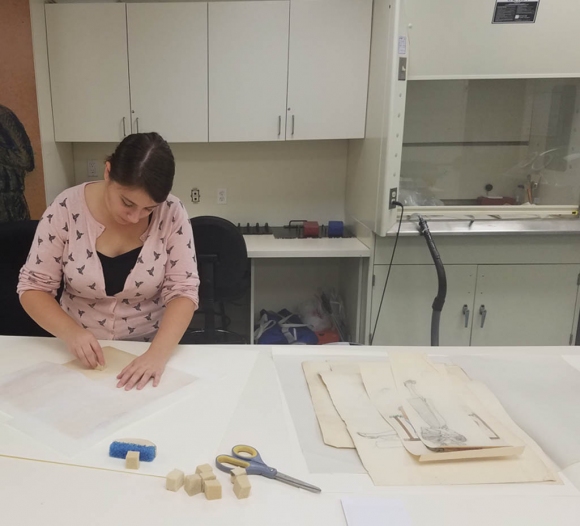
In the summer of 2019 I had the invaluable opportunity to do an internship at the Yeshiva University Museum in New York in fulfillment of requirements for my Masters degree in Fashion and Textile Studies: History, Theory, Museum Practice at FIT. Wanting to work with a collection dedicated to the preservation, study and exhibition of a broad spectrum of textile objects of the Jewish heritage, I came to the internship in order to see, touch, explore and contribute to the care of what I felt has yet to be given its fullest due attention in the narrative of world object history.
For the internship, the task at hand was to prepare for storage the fiber-related objects of Ina Golub, a contemporary artist who passed away in 2015 after a long and fruitful career as a fiber artist. Writing condition reports with sketches of the object propelled me to look closely at every detail and artistic choice that Ina made in creating her works of art. The scope of methods and materials revealed not only her personal gifts and mastery, but the bold employment of traditional techniques such as Gobelins tapestry weave, appliqué, macramé, couched metal threads and beadwork to give a contemporary voice to the cultural and spiritual heritage of the Jewish people. It is truly “Am Israel Hai” spelled in fiber!


Having spent time with a portion of YU Museum’s collection, I cannot but restate the value of the direct and simple experience that contact with objects affords us. As such, many of these still await interpretation and exhibition. In Ina Golub’s own words: “I hope that the many people that view this tapestry will not only experience the joy of its forms and colors and textures, but will gain a stronger feeling for the broad spectrum that is Jewish purpose and existence.” [1] I
couldn’t agree more.
[1] Golub, Ina. Text of comments to be made by Ina Golub at dedication of tapestry at Temple
Sinai, Roslyn Heights, New York. Yeshiva University Museum, Box 3, folder 13

Comments
Share Your Comments: